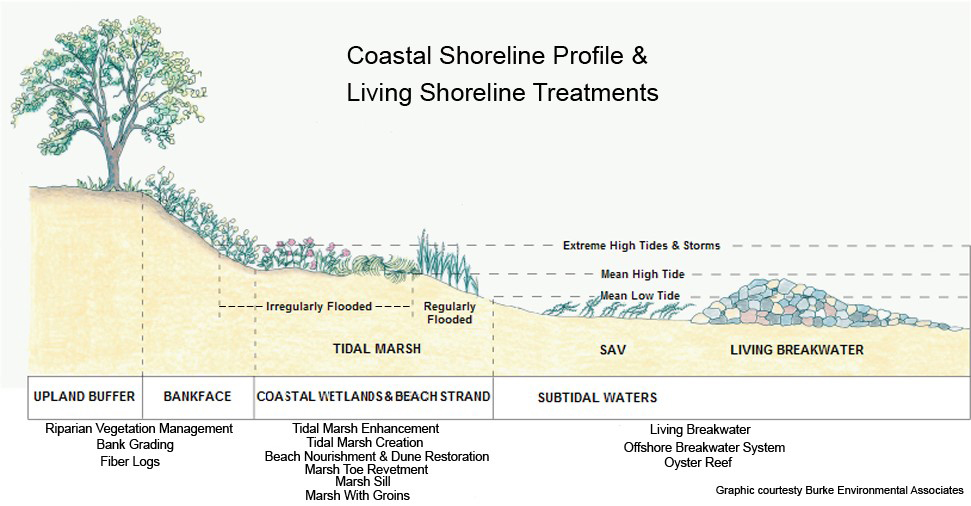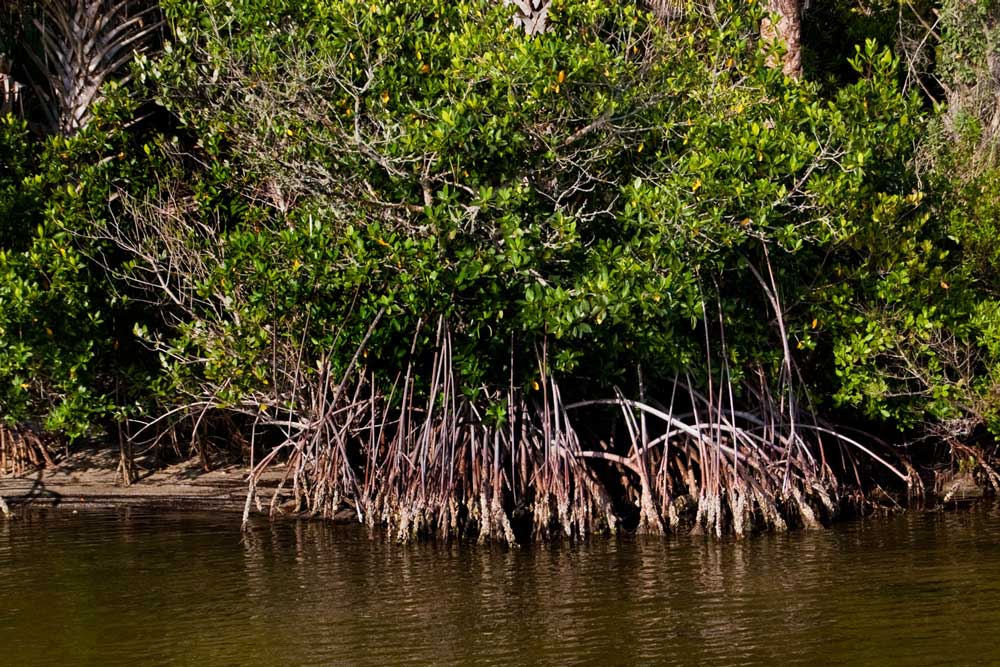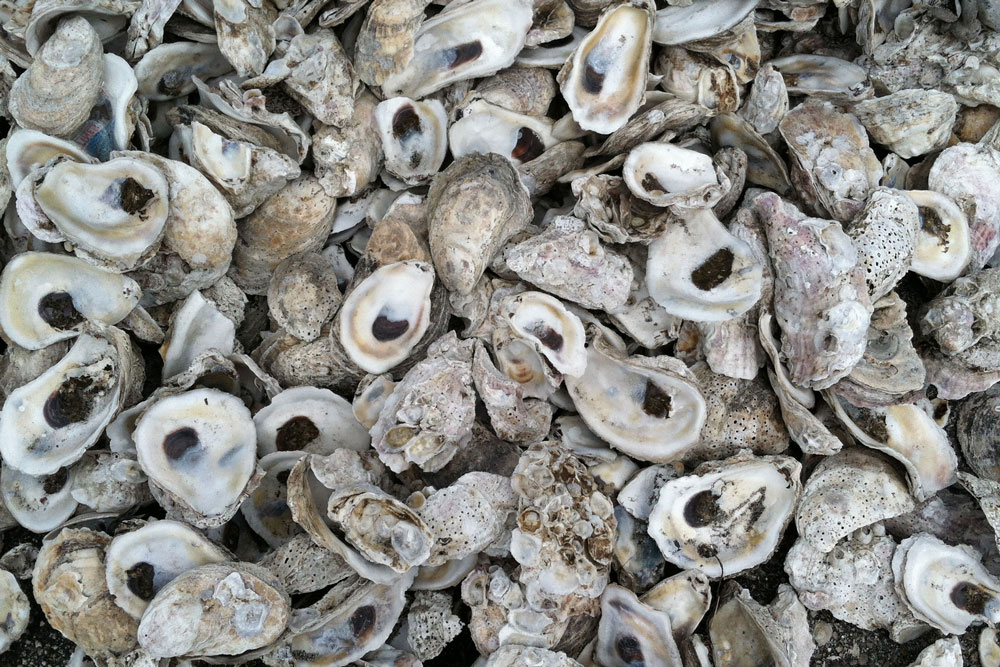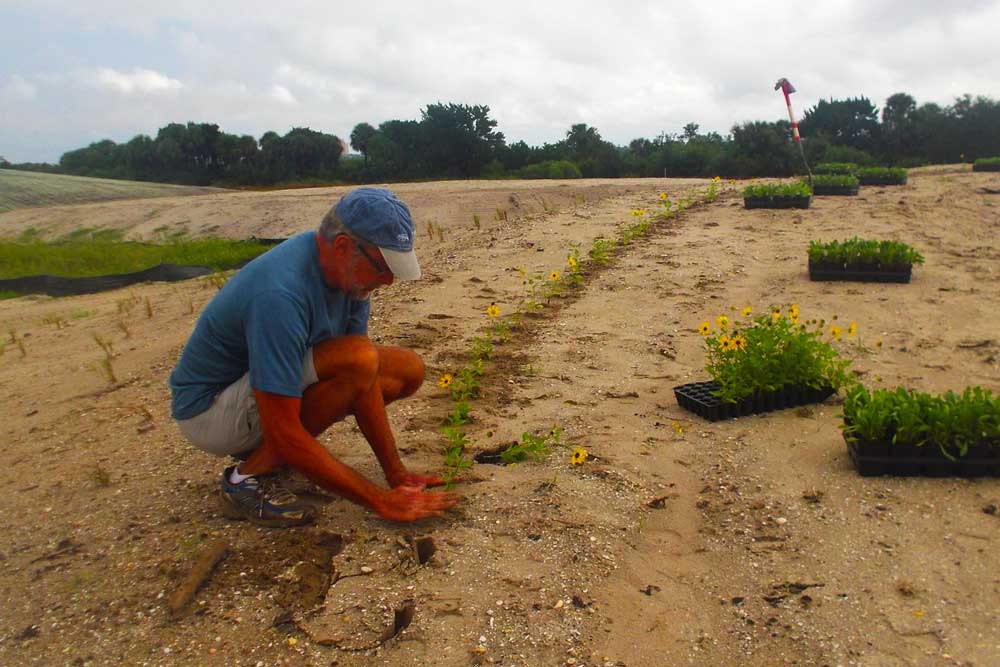Living Shorelines
Living shorelines are an erosion prevention method that use natural barriers such as plants, oysters, and limited rock to protect fragile shorelines while maintaining valuable habitat. Living shoreline projects utilize native and salt tolerant plants at different levels of elevation to avoid the loss of sediment, help to improve water quality via filtration of upland run off, and create habitat for aquatic and terrestrial species. In areas of higher wave energy due to large boat wakes or wind-driven waves the use of rock may be necessary, or oyster restoration materials may be used to create a new oyster bed while dissipating wave energy and protecting a shoreline. To learn more about living shorelines, including how to protect your property with one, please visit Floridalivingshorelines.com
Mangroves
All mangrove plants or communities live in tropical to sub-tropical climates that contain wet soils, tolerate saline habitats (halophytes), are exposed to periodic tidal submergence and exhibit viviparity (a plant with live birth – the seed is germinated (propagule) on the parent plant before dispersal).
Marsh Grasses
Cordgrass is an important part of the estuarine food web. Manatees eat cordgrass, and algae that adhere to the stems provide food for snails and mussels. As the grass dies it becomes a floating mass, called a wrack, and as it breaks down is eventually eaten by clams, mussels, crabs, and snails.
Oysters
Oysters are one of the keystone species in Florida, and many species of animals rely on them for food, protection, and habitat. Oyster beds help to dissipate wave energy and keep shorelines intact and they help to keep the water clear by filtering out particulate matter and excess nutrients.
Native Plants
Watering our lawns and landscaping puts a lot of stress on Florida’s aquifer system. Removing water from the aquifer for irrigation means we will have less drinking water, more sinkholes, and are risking the health of Florida’s beautiful natural springs.
Invasive Plants
Invasive species are defined as non-native species in the area that have the capability to spread and cause damage to the environment by killing native species or taking over habitat. Many invasive species in Florida were brought here for ornamental purposes without knowing the long-lasting issues they would cause.

Our Mission:
"To protect our coastal ecosystems through education, conservation, and exploration"






